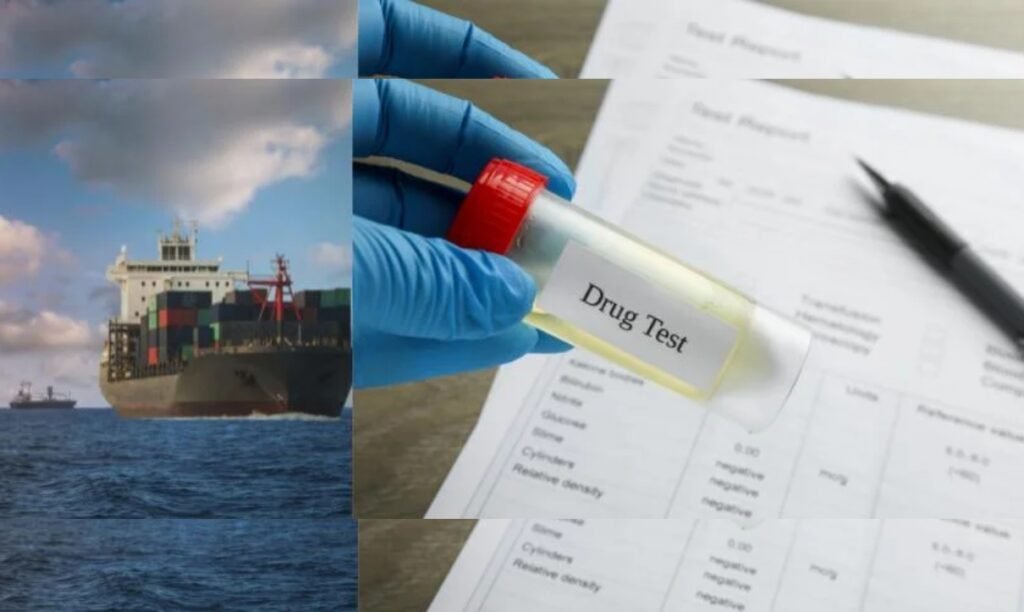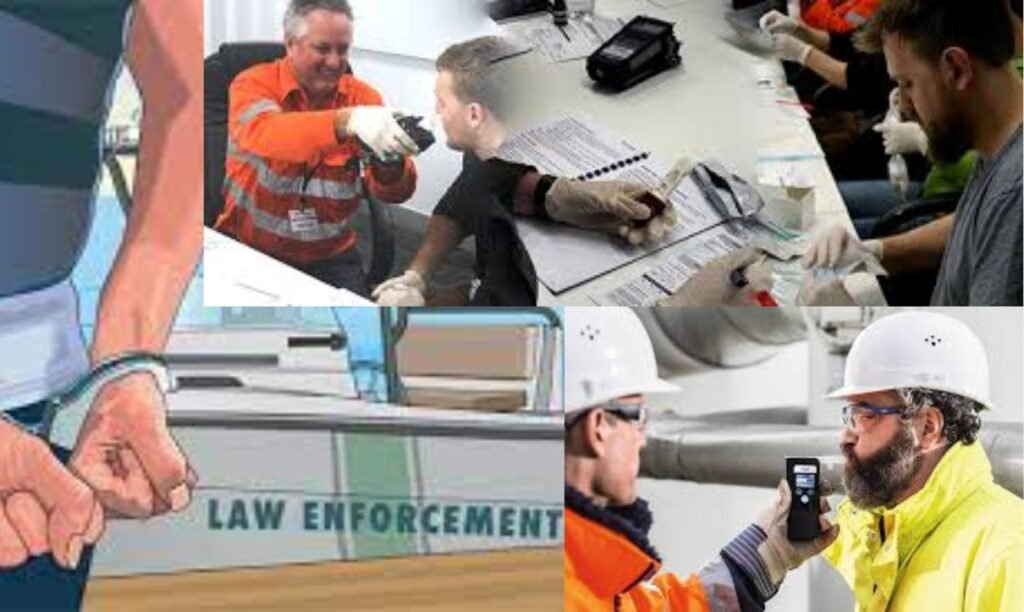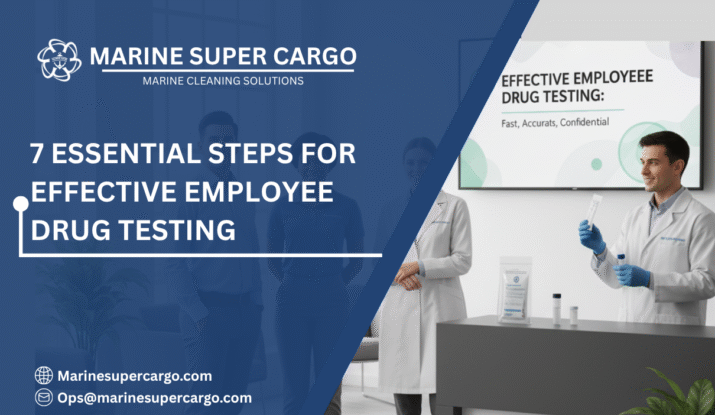Employee Drug Testing: A Step-by-Step Guide
When it comes to workplace safety and trust, Employee Drug Testing may feel like a sensitive subject. Still, it acts as an anchor that keeps teams steady, reliable, and safe. Just as ships depend on clean hulls to move efficiently, companies depend on sober, capable employees to perform effectively. Testing is not about suspicion—it’s about prevention, protection, and compliance. Done right, it fosters safety, trust, and accountability in ways that serve both employees and employers. This guide breaks down the process step by step and shows why drug testing matters for modern workplaces across industries—whether in offices or at sea.
Why Employee Drug Testing Matters
The first step in understanding Employee Drug Testing is realizing its primary goal: protecting people and operations. Many employees may assume it signals mistrust, but in fact, it reassures everyone that the team is operating responsibly. One impaired person in a critical role can put lives, assets, and reputations at risk. Think about the maritime sector: a crew member impaired on duty could jeopardize entire voyages. That’s why compliance agencies like the IMO emphasize vigilance. Testing ensures employees are fit for duty and companies meet global safety standards set by regulators.

Step 1: Establishing Policy Frameworks
Any effective testing program begins with a clear, transparent policy. This defines the “why” behind Employee Drug Testing and educates employees beforehand. Policies should answer:
- What substances will be tested?
- How will testing be conducted?
- What happens if results are positive?
Transparency and fairness eliminate fear and misunderstanding. Similar to how the MARPOL Convention provides rules for safe marine operations, workplace policies act as navigational charts. They guide employees and prevent confusion, ensuring everyone knows the rules of the journey.
Step 2: Deciding on Testing Types
There are multiple testing options, but choosing the right one is crucial for accuracy and practicality. Employee Drug Testing commonly uses these formats:
- Urine testing: Fast and widely accepted.
- Saliva swabs: Non-invasive, easy in field conditions.
- Hair follicle tests: Detect long-term usage.
Each method balances speed, invasiveness, and detection windows. For example, shipping companies with large crews often prefer saliva testing for quick turnaround while still meeting compliance expectations. This is a step where managers must weigh costs, logistics, and industry obligations.
Step 3: Random vs. Scheduled Testing
Many organizations struggle with whether to schedule tests or keep them random. The difference is in deterrence. Scheduled tests are predictable, giving employees time to prepare, which weakens effectiveness. Random tests, however, create unpredictability. That unpredictability encourages constant compliance, discouraging unsafe behavior before it starts. It’s like lifeboat drills—employees know they happen, but they don’t know when. Combined, the fairness of selection and the uncertainty of timing make random employee drug testing a cornerstone of successful corporate safety strategies. Learn more about Employee Alcohol Testing.
Step 4: Ensuring Legal and Ethical Compliance
Testing involves sensitive personal information, making ethics and legality critical. Employers must respect privacy while protecting workplace well-being. Countries and industries have varying rules on consent, data protection, and disciplinary action. Partnering with accredited agencies ensures that Employee Drug Testing aligns with labor rights and international standards. For maritime firms, compliance runs through IMCA and IAPH to maintain global best practices. When testing is conducted fairly, transparently, and respectfully, employees perceive it as legitimate and protective, not invasive.
Step 5: Conducting the Tests
The actual testing process should be professional, efficient, and confidential. Employers often engage certified labs or third-party providers. Standard protocols involve proper sample collection, chain-of-custody logging, and accuracy verification with laboratory confirmation. This ensures fairness and protects employers from legal challenges. Employee drug testing done without a clear procedure risks accusations of bias or mishandling. Following strict process steps maintains credibility, much like how vessel inspections are logged with meticulous care to ensure compliance and safety verification. Learn more Importance of Drug Testing at Work.
Step 6: Addressing Positive Results
Positive test results should never be handled reactively or harshly. Instead, employers should balance accountability with compassion. Many organizations adopt Employee Assistance Programs (EAPs) to address substance misuse through counseling or rehabilitation. Early detection is like identifying corrosion on a ship’s hull—if you fix it before it worsens, you protect the entire vessel. Employee drug testing helps companies intervene at the right time, safeguarding employees while also preserving workplace efficiency. Employers must communicate next steps clearly, combining disciplinary frameworks with support measures.
Step 7: Monitoring and Continuous Improvement
No program works forever without evaluation. Organizations should regularly review test outcomes, adjust policies, and update methods. Monitoring compliance trends provides valuable data—showing whether random Employee Drug Testing reduces incidents, insurance claims, or operational errors. Think of it like continuous hull cleaning; the longer you monitor, the more efficient the vessel becomes. Reviewing outcomes ensures the program isn’t static but evolves with changing workplace dynamics and new international regulations. Also read about Ensuring safer seas with 0 risks through cargo safety testing
✅ 4 Things to Check for Safety at Sea pic.twitter.com/dAxhJQ2i6U
— Marine Super Cargo (@Marinsupercargo) September 14, 2025
Marine Supercargo Expands Services: Drug & Alcohol Testing for Safer Seas
Marine Supercargo, widely recognized for its global platform in marine cleaning and operational efficiency, has expanded services to include drug & alcohol testing for seafarers. Maritime operations face unique risks where a single impaired crewmember can compromise vessel safety, create costly delays, and even trigger environmental disasters. By providing reliable testing, Marine Supercargo enables ship owners, operators, and managers to remain compliant with IMO and IMCA regulations.
This new service integrates well with marine vessel cleaning because both safety and maintenance are critical to efficiency. Just as fouling on a hull slows a ship, impaired judgment slows teamwork, efficiency, and reliability. Marine Supercargo now offers end-to-end solutions—clean hulls for environmental performance and drug testing for human reliability—helping fleets stay safe, sustainable, and compliant on global waters.
Step 8: Integrating Testing into Corporate Culture
For programs to succeed long term, Employee Drug Testing must be part of the broader workplace culture. If it feels like a punishment, it creates resistance. However, when integrated as a safety measure with supportive communication, employees view it as part of a shared responsibility. Cultures shaped around accountability often experience reduced absenteeism, stronger morale, and better teamwork. This process transforms testing from a mere policy requirement into a value system embodied by every employee.

The Future of Employee Drug Testing
The landscape is evolving with advances in science and AI-driven management. Smart systems now randomize employee selection, eliminating human bias. Emerging biometric monitoring tools may eventually provide real-time data about employees’ readiness for duty. Corporate testing programs will likely combine with broader mental health and wellness initiatives. Just like hull cleaning transitioned into eco-friendly methods for sustainability, Employee Drug Testing will also evolve into holistic safety programs that blend trust, wellness, and accountability.
Conclusion
Employee Drug Testing is no longer just an option; it’s a necessity for safety, compliance, and efficiency. First, it builds workplace trust by ensuring employees are fit for duty. Second, it saves companies from costly accidents, fines, and downtime. Third, it aligns businesses with international obligations, preparing them for a safer, more compliant future. To enhance both human and environmental reliability, explore solutions at CleanShip.co and start safeguarding your operations today.
FAQs:
Q1. Why is Employee Drug Testing important in workplaces?
It prevents unsafe practices, reduces workplace risks, and ensures compliance with industry regulations across corporate and maritime sectors.
Q2. How do random tests differ from scheduled tests?
Random testing eliminates predictability, reducing substance misuse effectively. Scheduled testing is more vulnerable to manipulation or preparation.
Q3. How does testing help meet global compliance?
Q4. What connection exists between drug testing and vessel cleaning?
Both address efficiency. Hull cleaning reduces energy waste, and drug testing ensures employees remain fit for safe operations. Together, they preserve resources.
Q5. What does the future hold for drug testing?
Expect AI-based randomization, wellness integration, and biometric tools, turning Employee Drug Testing into a continuous safety and productivity framework.


